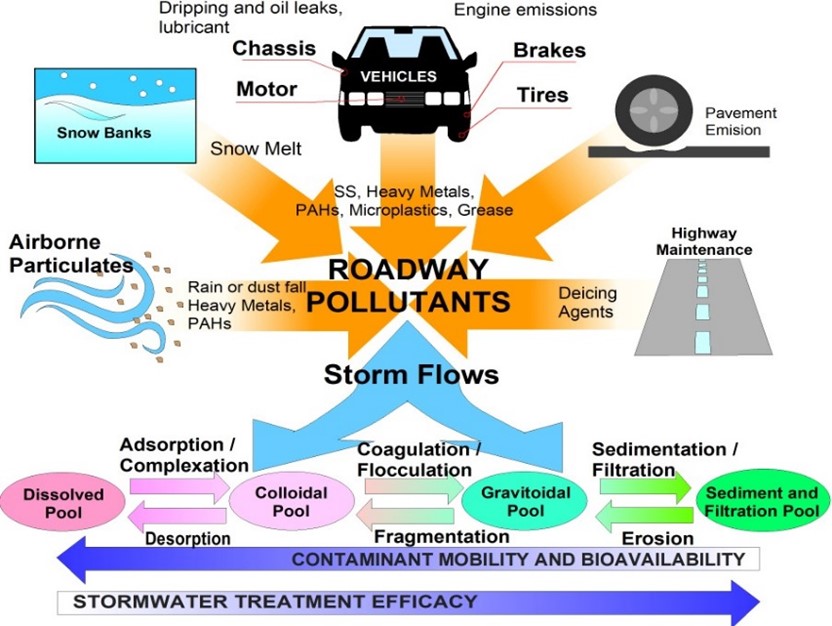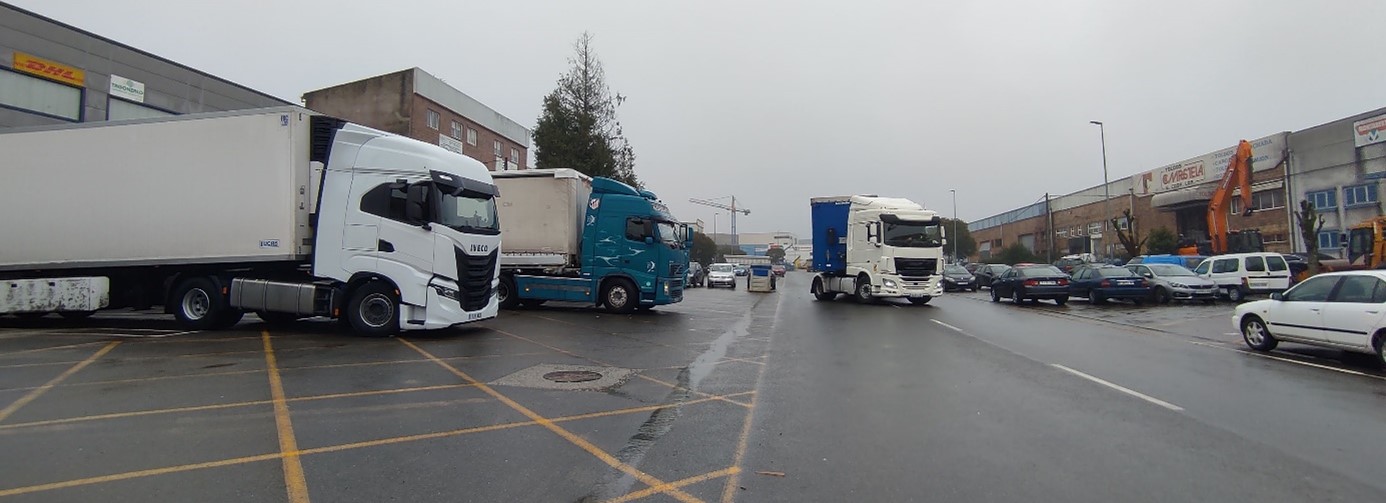In the urban areas, an often overlooked threat silently accumulates – urban road-deposited sediment (RDS). RDS refers to the accumulation of various particles, originating from difusse sources like vehicle emissions, tire wear or construction activities, that contain a large number of pollutants as seen in Table 1 (e.g., heavy metals-HM’s, polycyclic aromatic hydrocarbons -PAH’s and microplastics-MP’s), and eventually find their way into stormwater runoff, posing a threat to water quality and public health. The problem intensifies as urbanization progresses, with increased impervious surfaces amplifying the runoff, leading to higher sediment transport.
| Source | Pollutant |
| Air pollution | PM, NH3, NOx, Persistent organic pollutants (POPs), PAHs, SOx, HM |
| Vehicles | Cu, Zn, Fe, Mo, Na, Ni, Pb, Sb, MPs, PAHs, Al, Ca, Cd, Co, Mn, W, hydrocarbons, MPs, POPs |
| Road surface | Al, Ca, Fe, K, Mg, Na, Pb, Si, Ti, PAHs |
Table 1. Summary of pollutants in RDS
Understanding the dynamics of generation and accumulation of RDS (Figure 1), is crucial to minimize pressures on water bodies, and to restore and maintain their good status for a sustainable urban development. Addressing the problem of RDS requires a holistic approach: sources, intensity and way in which they accumulate and react, how rainwater acts on them, how they are transported by runoff, in what forms they reach water bodies, how they impact ecosystems, ... Therefore, conducting campaigns for their collection and characterization, as well as the characterization of hydrographs and polutograms, is essential to develop appropriate environmental management strategies.

Figure 1. Conceptual framework of the RDS generation in urban areas (adapted from Caltrans, 2003)
Some general steps involved in collecting RDS effectively are listed below:
- Identify Sampling Locations where RDS accumulates considering factors such as traffic density, land use, and the presence of potential pollution sources, like industrial or commercial activities.
- Select appropriate sampling equipment based on the size and characteristics of the sediment particles and on the specific analysis requirements for the collected sediment.
- Establish a standardized sampling protocol to ensure consistency across different sampling locations and times is crucial for obtaining reliable data for analysis.
- Preserve and handling the collected samples properly to prevent changes in sediment characteristics and avoid the contamination during transportation.
- Conduct laboratory analyses to determine the concentration of pollutants and other relevant parameters.
In conclusion, the complexity of RDS demands urgent attention, so the recognition of the intricate connections between sediment, water pollution, and air pollution, is the fundamental key in the development of the WTERUN methodology in Santiago de compostela case study (Figure 2).

Figure 2.Parking lot in Tambre Industrial park - GEAMA
Authors: Angélica Goya: angelica.goya@udc.es; Joaquín Suárez: joaquin.suarez@udc.es; Jose Anta: jose.anta@udc.es; Alfredo Jácome: alfredo.jacome@udc.es - Universidade Da Coruña -(24/01/2024)